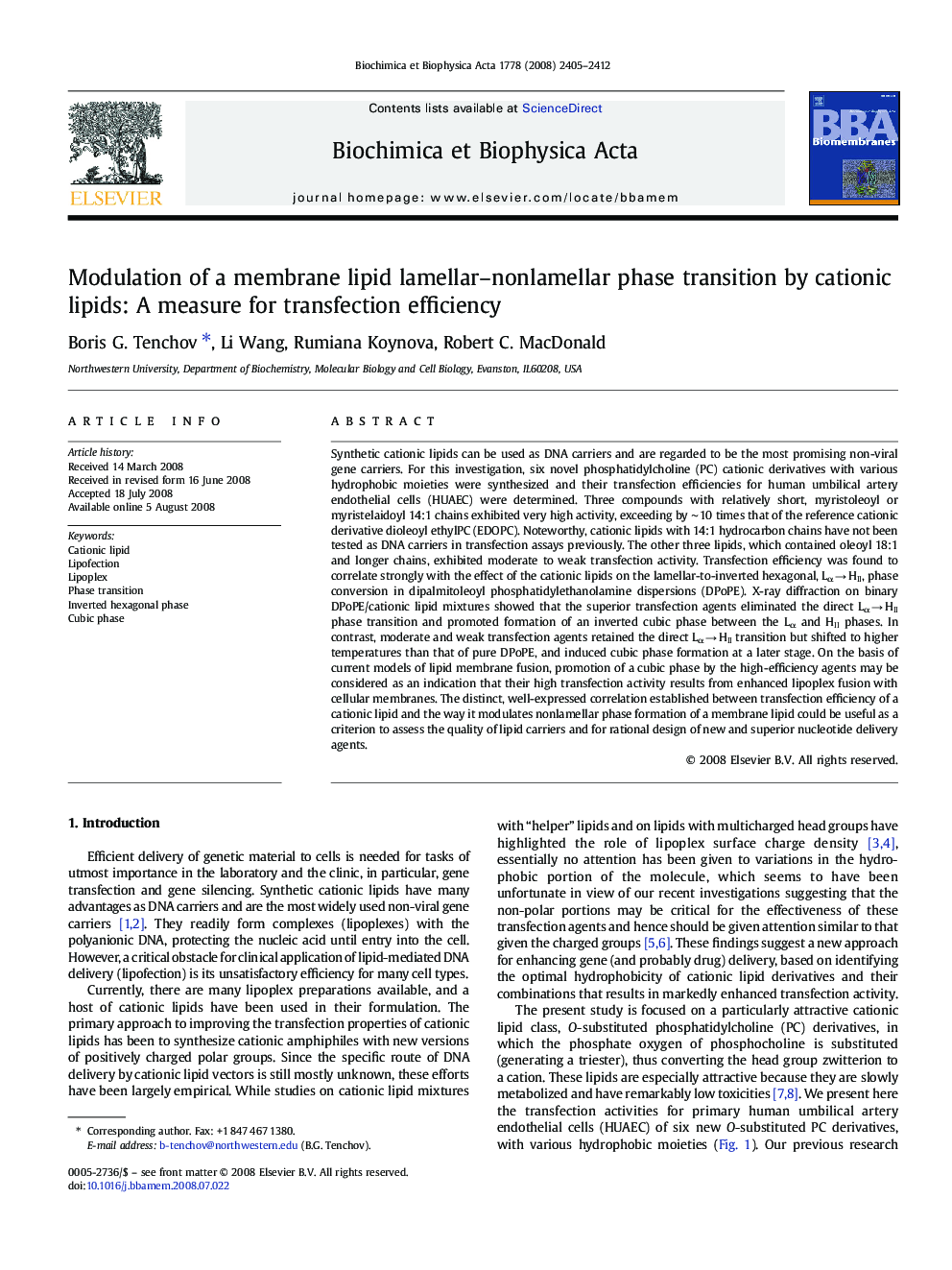| کد مقاله | کد نشریه | سال انتشار | مقاله انگلیسی | نسخه تمام متن |
|---|---|---|---|---|
| 1945481 | 1053265 | 2008 | 8 صفحه PDF | دانلود رایگان |

Synthetic cationic lipids can be used as DNA carriers and are regarded to be the most promising non-viral gene carriers. For this investigation, six novel phosphatidylcholine (PC) cationic derivatives with various hydrophobic moieties were synthesized and their transfection efficiencies for human umbilical artery endothelial cells (HUAEC) were determined. Three compounds with relatively short, myristoleoyl or myristelaidoyl 14:1 chains exhibited very high activity, exceeding by ∼ 10 times that of the reference cationic derivative dioleoyl ethylPC (EDOPC). Noteworthy, cationic lipids with 14:1 hydrocarbon chains have not been tested as DNA carriers in transfection assays previously. The other three lipids, which contained oleoyl 18:1 and longer chains, exhibited moderate to weak transfection activity. Transfection efficiency was found to correlate strongly with the effect of the cationic lipids on the lamellar-to-inverted hexagonal, Lα → HII, phase conversion in dipalmitoleoyl phosphatidylethanolamine dispersions (DPoPE). X-ray diffraction on binary DPoPE/cationic lipid mixtures showed that the superior transfection agents eliminated the direct Lα → HII phase transition and promoted formation of an inverted cubic phase between the Lα and HII phases. In contrast, moderate and weak transfection agents retained the direct Lα → HII transition but shifted to higher temperatures than that of pure DPoPE, and induced cubic phase formation at a later stage. On the basis of current models of lipid membrane fusion, promotion of a cubic phase by the high-efficiency agents may be considered as an indication that their high transfection activity results from enhanced lipoplex fusion with cellular membranes. The distinct, well-expressed correlation established between transfection efficiency of a cationic lipid and the way it modulates nonlamellar phase formation of a membrane lipid could be useful as a criterion to assess the quality of lipid carriers and for rational design of new and superior nucleotide delivery agents.
Journal: Biochimica et Biophysica Acta (BBA) - Biomembranes - Volume 1778, Issue 10, October 2008, Pages 2405–2412